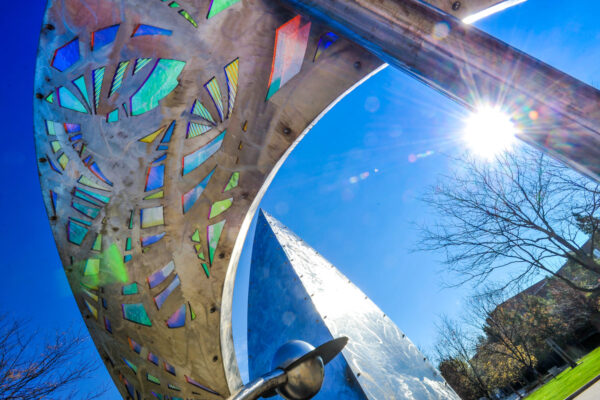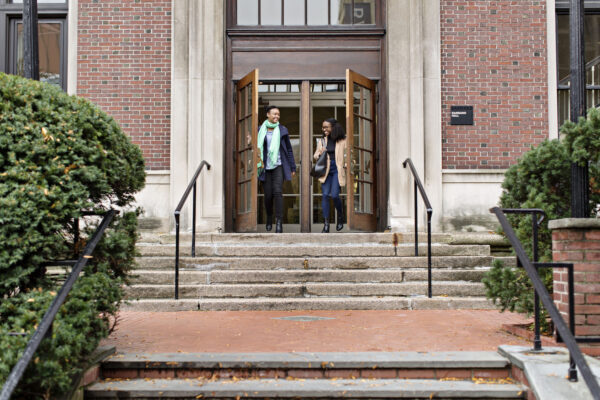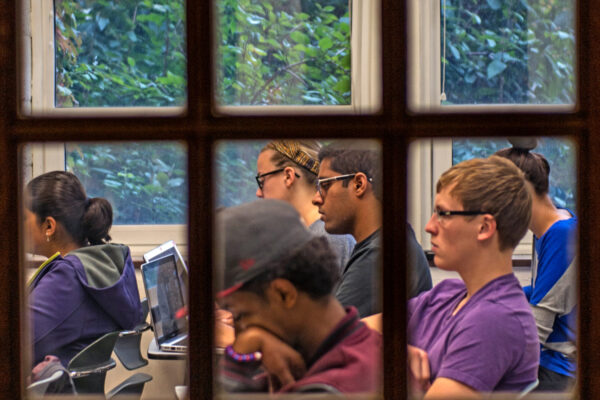Few higher education administrators have not read or heard of Demographics and the Demand for Higher Education, the landmark bestseller by economist Nathan D. Grawe. In it, Grawe predicts that many of the nation’s colleges and universities will face declining student enrollment rates in about five years, a reality that will require a thoughtful, strategic approach to ensure the viability and sustainability of those institutions.
As a transdisciplinary and globally oriented scholar of fifteenth-century Italian art and literature, I believe we can look to the Renaissance for strategic inspiration to address the twenty-first-century challenges of the looming “enrollment cliff.” The great Renaissance thinkers were drawn to and demonstrated expertise in several fields at once, including science, technology, engineering, mathematics, and the arts.
Filippo Brunelleschi, the Italian sculptor, architect, and engineer, is credited with creating the theory of artificial perspective in painting. Leon Battista Alberti, the humanist, author, artist, architect, philosopher, and cryptographer, first published that theory and that of geometric diagramming of perspective in 1434. Throughout the centuries, their work has demonstrated that we can change what we see by shifting our stance. In other words, the looming enrollment cliff can be seen as an opportunity. We need multiple perspectives to create successful solutions.
There are key similarities between these historical, innovative Renaissance thinkers and our technophile Gen Z students (those born after 1995) that are advantageous for approaching the enrollment problem. For one, both the Renaissance polymaths and Gen Z have in common a passion for discovery, innovation, and making the world a better place. Like their Renaissance predecessors, this generation of students wants to be a number of different things—not just one. They are diverse, driven, curious, and resourceful.
Today’s Gen Z students want to express their individuality and do not want to be force-fit into a job upon graduation. This generation wants to integrate their academic passions with the social justice causes to which they already devote their energy. They are creative, and they know that the jobs that will become relevant in their lifetimes may not even exist yet.
Preparing Gen Z for life
Today’s interconnected and complex global challenges require a shift in how colleges and universities approach their curricula and graduation requirements. Instead of making graduates too focused and less adaptable, the institutions that will attract Gen Z in the near future will focus on interdisciplinary problem-solving and will aim to prepare passionate students for life rather than being wedded to one idea, one role, or one career.
A number of colleges and universities have for many years offered—and, in some cases, built their curricula around—traditional co-op programs. The advantages of co-op programs for the student and for local businesses have long been touted. As questions regarding the value of a traditional four-year undergraduate degree continue to grow, co-op programs braid together classroom learning with work experience in ways that reduce student debt, enhance graduate satisfaction with their education choice, and raise the institution’s profile in industry, among a number of other benefits. The opportunity for students to incorporate real work experience into their education helps them embrace multiple sides of themselves, reduce the financial pressures students are facing, and explore career options long before they have to permanently join the workforce. This multipronged approach has innovative and positive economic benefits for local communities as well.
The same demographic cliff facing higher education is also facing many industries to various degrees, particularly in rural communities. Local businesses simply cannot get enough young people to go to work in their factories, offices, sales forces, or production plants. And they need people to choose that pathway, just as we in higher education need people to choose ours. But soon there simply will no longer be enough young people to satisfy all the different options. So what if the solutions to benefit struggling higher education institutions and struggling local communities were one and the same? What if we leveraged these existential challenges into equity-driven solutions that benefit the communities just as much as they do students and higher ed institutions?
Allegheny College: Meeting Gen Z while investing in our region
To prepare students to be effective and productive after they graduate—to be more than just one thing—Allegheny College is doubling down on its long-standing interdisciplinary approach to education, requiring all students to graduate with a major and a minor in two different divisions. An Allegheny College education challenges Gen Z to explore interconnected subjects, create innovative and multifaceted solutions, and examine multiple perspectives so they may tackle the tough societal problems that are important to them, not unlike the Renaissance thinkers hundreds of years before them.
Using that same multidisciplinary approach, we are implementing co-op–style programs that go beyond traditional benefits for students and businesses to become a true driver of regional economic development. We are connecting our faculty and students with our local businesses to solve workforce and pipeline challenges locally, expand internship and postgraduation opportunities for students, and engage students more meaningfully in contributing to regional economic investment.
The Allegheny College Lab for Innovation & Creativity (ALIC) Co-op, for example, guides our students explicitly to make connections between their liberal arts studies and the manufacturing industries that surround us in ways that neither they nor our industry partners had previously considered. The lab is a space where science and the humanities intersect, providing hands-on experience with technology and opportunities to think critically about its context, history, and implications. Students can now enter the local, regional, national, or international workforce with a world-class Allegheny College education backed by the technical skills to make an immediate impact the moment they arrive.
We partner with industry leaders who identify the technologies, skills, and tools they deem vital to their operations, which are then taught to Allegheny College students in half-semester courses led by these industry partners and our faculty. These courses are pathways for our partners to hire interns and employees who are already up to speed on in-demand tools and technologies. They also provide ways for students to commit to our local community in the long term; for the college to support growth in our local manufacturing and technology industries; and for the college and the community to see each other as valuable partners as opposed to competitors, crossing not only disciplines but also economic strata, political viewpoints, and cultures.
Action or failure?
Institutions of higher education must consciously understand, embrace, and respond to the concerns and needs of Gen Z simultaneously with the evolving, industry-specific demands of the marketplace around them—and do it fast—or they will fail. Interdisciplinary learning and co-op–style workforce development programs are merely two examples of what Gen Z and our changing world demand.
A more modern Italian author, Giuseppe Tomasi di Lampedusa, famously wrote in The Leopard (1959) that “if we want things to stay as they are, things will have to change.” The flip side is that if higher education does not change itself, external circumstances will continue to render it vulnerable and ultimately less relevant. Like during the Renaissance, we are experiencing a rebirth in higher education. By developing the sort of interdisciplinary, Renaissance worldview that propelled a changing society forward, we too will be able to innovate, collaborate, and optimally execute to meet the challenges of today and tomorrow.
If you have any questions or comments about this blog post, please contact us.


